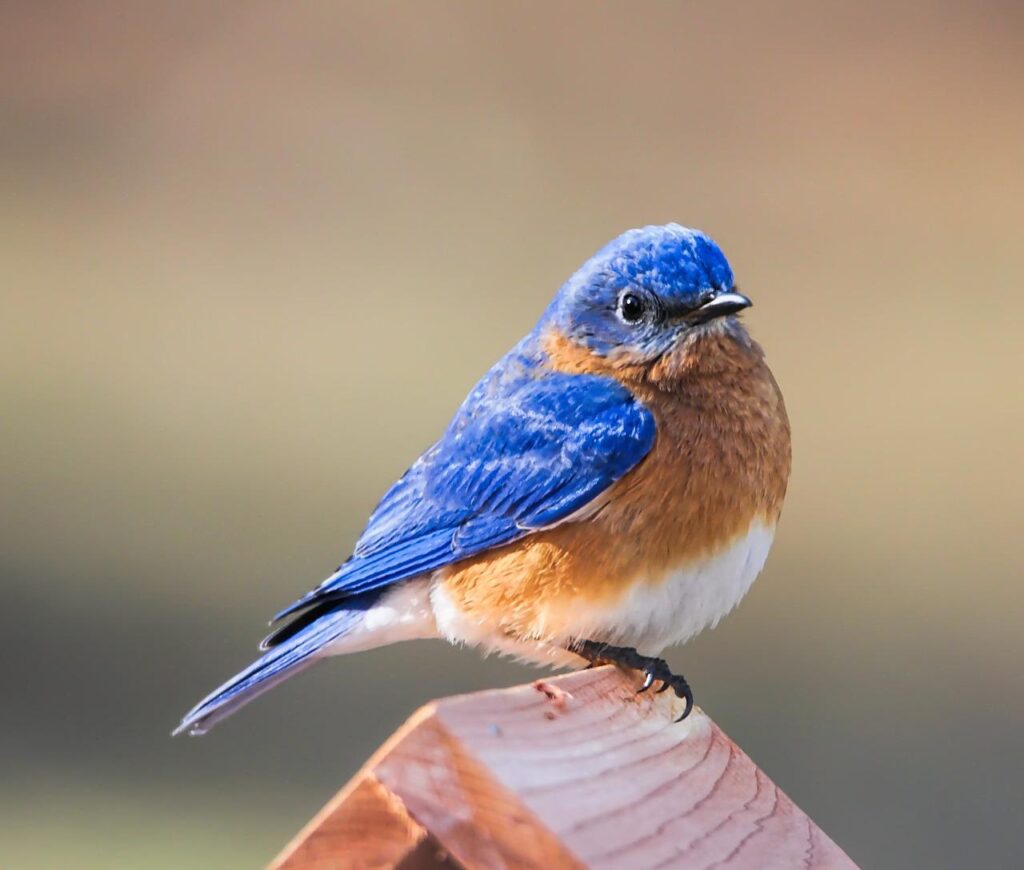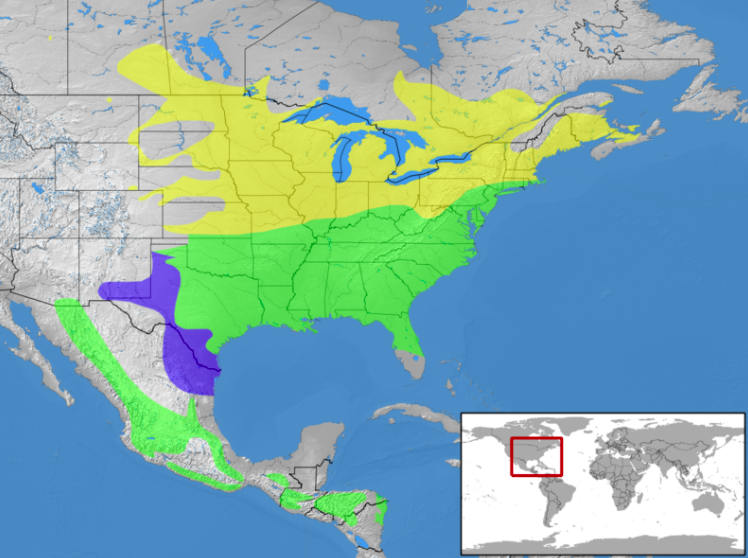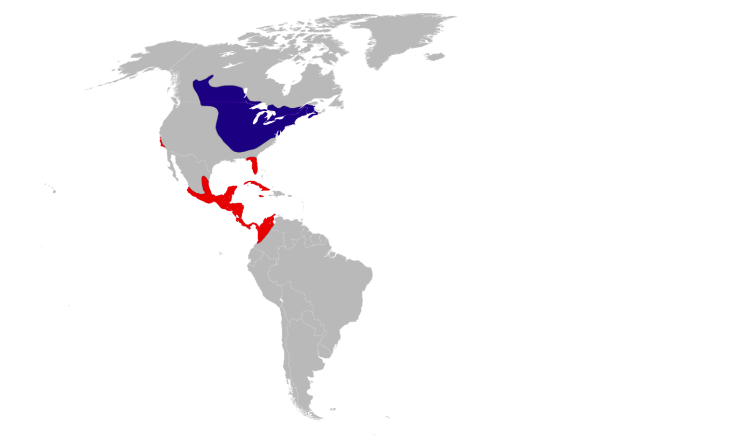Does anyone like mosquitoes? If you do, please don’t invite me to your house…or talk to me at all. You’re probably a serial killer. Thankfully for the rest of us, there are birds that eat mosquitoes!
If you’re looking for a natural way to reduce the number of mosquitoes in your yard, you can attract some mosquito-eating birds to you yard for some natural pest control.
Before jumping in, I want to be clear that attracting birds to your yard shouldn’t be viewed as a comprehensive pest control solution. This is meant to be a fun and educational article. Call in professionals if mosquitoes have your house under siege, okay?
With that out of the way, here are seven neat birds that eat mosquitoes and some tips to bring them into your neck of the woods.
1. Common Nighthawk
Okay, some good and bad news. The good news is that the Common Nighthawk eats a ton of mosquitoes. One survey found a bird that ate 300 mosquitoes in a night, resulting in giving the bird that nickname of “mosquito hawk”. Common Nighthawks almost exclusively eat flying insects AND they’re active at night when mosquitoes are flying around.
The bad news is that there isn’t a ton that you can do to specifically attract Nighthawks to your home. When in doubt, I always refer back to some universal things you can do that are beneficial for birds (and other wildlife in your yard). Doing these six things below will help make your yard a haven for birds.
- Provide water (especially a heated bird bath in the winter)
- Avoid using pesticides
- Have trees and shrubbery nearby
- Plant native plants in your yard
- Keep your cats indoors
- Clean your bird feeders and bird baths every few weeks to prevent disease from spreading
The Range of the Common Nighthawk

Yellow: Spring migration
Blue: Winter
Purple: Year-round
Image credit: Cephas, Wikipedia
2. Eastern Bluebirds

Getting live mealworms and putting them on a sturdy bird feeder is your best bet to draw in Eastern Bluebirds. They’re also likely to take up residence in nest boxes in the spring and summer if you have space. You’ll probably have the best luck with that approach if you live in a more remote area or in their migration range (in yellow below).
The Range of Eastern Bluebirds

Credit: rbrausse, Wikipedia
3. Downy Woodpeckers

Downy Woodpeckers eat all sorts of insects, including mosquitoes, with glee! They’re also easy to draw to a suet cage or suet log feeder in your yard!
I’ve had the best luck with peanut-based suets. You can also buy spicy versions of suet if you’re dealing with squirrels.
Related Content: 8 Famous People and Their Favorite Birds
Downy Woodpeckers are also abundant across most of North America! They don’t require a lot to become regular visitors to your yard. Downy Woodpeckers are one of the most consistent visitors at my bird feeders.
The Range of Downy Woodpeckers

4. House Wren

House Wren’s will dine on mosquitoes, spiders, beetles, crickets and other insects in your yard!
According to the Cornell Bird Lab, you can bring House Wrens to your home by putting up a brush pile in your yard to provide them protection and insects to eat! Wrens are also common users of nest boxes in the spring/summer!
Here’s a good Wren house option for sale on Amazon. Hang a House Wren nest box 5-10 feet in the air and near trees/vegetation. They tend to use boxes from May through August in the Northern Half of the United States.
House Wrens may also visit bird feeders for suet and mealworms on rare occasion.
5. Hummingbirds

Did you know Hummingbirds can eat hundreds of insects a day? That’s a lot for a bird that often weighs less than a marshmallow!
The easiest way to attract hummingbirds to visit your yard is to put out a nectar feeder and fill it up with fresh homemade nectar. You can easily make your own hummingbird nectar by combining four parts water with one part table sugar. Don’t use honey or any sugar substitute and be sure to swap in fresh nectar every other day to ensure it doesn’t spoil and get moldy. Here’s a short video showing you how to make it.
You’ll increase your odds of attracting hummingbirds by also having native plants and flowers in your yard. Bonus points for tubular flowers. Some options that Ruby-Throated Hummingbirds like are cardinals flowers or bergamot.
For more on attracting hummingbirds, I have an extensive guide of 11 things you can do to bring a ton of them to your yard.
6. Baltimore Orioles

Grape jelly is top pick for attracting Baltimore Orioles in a feeder that has space for both. There’s also fancier BirdBerry Jelly you can buy. It’s like Oriole caviar.
Baltimore Orioles will prefer eating mealworms later in the summer during nesting season.
The Range of Baltimore Orioles

7. Purple Martins

Purple Martins will eat mosquitoes, but I’m putting them at the bottom of this list because only around 2% of their diet is estimated to be mosquitoes, according to Wild Birds Unlimited.
BUT, that shouldn’t deter you from experimenting with attracting Purple Martins. They do eat wasps and other pesky insects!
Putting up a large nesting box is the name of the game for attracting Purple Martins. Purple Martins are colony nesters and prefer nest boxes with multiple spaces (this kit linked has everything needed for setup). A white Purple Martin nest house is most attractive, according to Cornell NestWatch.
Look to hang a Purple Martin nest box 10-15 feet in the air and keep it 60 feet away from trees and buildings.
The Range of Purple Martins

Yellow: Spring Migration
Blue: Winter
Image credit: Cephas, Wikipedia
Sources and Disclaimer
Disclaimer: Some links found on this page are Amazon affiliate links. If you click an affiliate link and make a purchase, I might earn a commission. As an Amazon Associate I earn from qualifying purchases. (There’s no extra cost to you if you do this).
